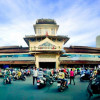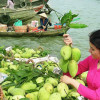First time in India – 5 important things to know before you go
For those who travel to India for the first time, it will be full of excitement and surprise. This country is rich in culture and beautiful scenery, and it is the origin of a major religion worldwide. History has left India with a mysterious beauty that attracts tourists.
Since there is much to see and feel, it’s helpful to get a heads-up on a few tricks before going. These tips about how to get around and when to go will enable one to get the most out of the trip.
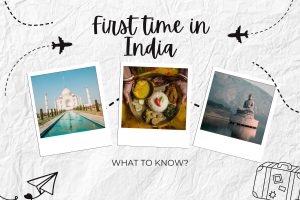
I. When is the Best Time to Visit India?
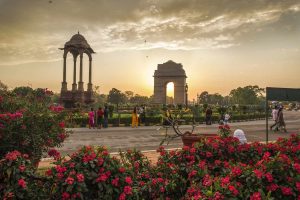
The climate in India varies quite a lot from region to region, ranging from the Himalayas, the highest mountain system in the world, to the hot and humid coastal regions. It is difficult to say the best time to visit India because it depends on many factors on your side.
Ideal visiting months for different regions:
- December to March: Best for most of India, including cities, temples, and wildlife safaris
- June to September: Perfect for Ladakh and high-altitude Himalayan regions
- October to November: Great for almost everywhere, with pleasant weather and fewer crowds
- April to June: Good for hill stations, but very hot in the plains
Festivals such as Diwali, Holi, and other regional celebrations may challenge travel plans; hence, it is advisable to make bookings with a check for festivals.
Most travelers prefer to travel between the months of October and March because the climate is good and the cultural activities are on display throughout most of the country. However, if your way lies through the mountains or you do not shun heat, other seasons bring other attractions, and you meet significantly fewer people.
II. What to pack for India?
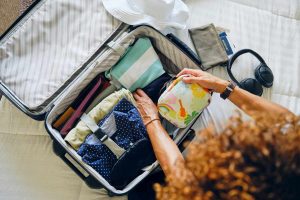
Below are basic things you can pack for your first India trip:
Clothing:
- Loose, modest clothes covering shoulders and knees
- Light layers for varied temperatures
- Comfortable walking shoes
- Scarf or shawl for women (useful for covering up at religious sites)
Health and Hygiene:
- Hand sanitizer and wet wipes
- Mosquito repellent
- Sunscreen
- Basic first aid kit
- Any necessary medications
Documents:
- Passport and visa
- Travel insurance details
- Photocopies of important documents
Money:
- Cash (Indian Rupees)
- Credit/debit cards
- Money belt
Note: Clothes and tapering off, especially in religious places. Temples and mosques require more modest dress codes, so it is not reasonable to wear skirts that expose thighs or T-shirts and shorts. Pack light and only bring what is truly necessary and should be appropriate for the country’s weather conditions and cultural policies.
III. How Many Days Do You Need in India?
The number of days required to spend in India is decided by your intentions and the places you want to cover. Due to its gargantuan size and variety, most travel writers suggest visitors spare not less than 10-14 days for the first encounter with the country. This will enable you to enjoy the best of the country without feeling that you are being encased.
A typical 10-day itinerary might look like this:
- Day 1-2: Delhi
- Day 3-4: Agra (Taj Mahal)
- Day 5-6: Jaipur
- Day 7-8: Varanasi
- Day 9-10: Return to Delhi, departure
This covers the popular “Golden Triangle” (Delhi, Agra, Jaipur) plus the spiritual city of Varanasi. However, if you have less time, you could focus on one region, such as Rajasthan or Kerala, for a week-long trip.
Remember, India is a country that rewards slow travel. Ideally, it is better to spend as much time as possible to plunge even deeper into the culture and geography of the country. Interestingly, more often than not, even with a conventional two weeks or more of the trip to India, they’ve only scratched the surface of what the country offers.
IV. Best Things to Do Your First Time in India
- Visit the Taj Mahal

It will also be familiar with the Taj Mahal – a wonder of the world which is to be visited, paying a visit to India. This elegant structure is made of white marble in Agra, symbolizing love; Shah Jahan constructed it for his spouse. While wandering through the gardens and the fountains, you will appreciate the work done and the background of this beautiful place.
- Explore Delhi’s historical sites
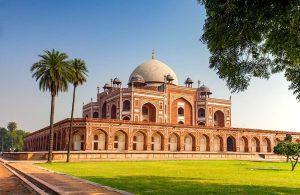
Delhi is a city in India, full of history and rare architectural samples. For an interesting past, one can visit Red Fort, Qutub Minar, and Humayun’s Tomb. These buildings have diverse architectural features, influenced by the Mughals and British colonization.
Visiting these places, you will be able to learn how history and different cultures have shaped the city through the years.
- Experience a traditional Indian festival
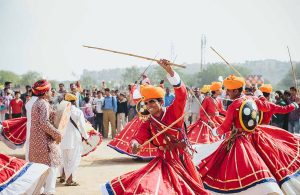
Festivals are the real synonym of India as this country is very popular worldwide because of the festivals celebrated with great zeal in India. Festivals like Diwali, Holi, or Navratra are colorful and full of music and joy, so you will enjoy the festival’s atmosphere.
There are usually opportunities to view typical dances, try the local cuisine, and engage in some rites of the festival that seem to set each apart.
- Take a culinary tour or cooking class

Indian cuisine is diverse and tasty, and there is something special for every area of the country. The best way to learn how to prepare simple Indian meals is to take a cooking class or even a food tour.
This will allow you to taste some of the meals you might have heard of, such as curries, naan, and street foods. It will allow you to see how Indian spices are utilized and learn how to prepare typical foods as would a native.
- Visit a wildlife sanctuary
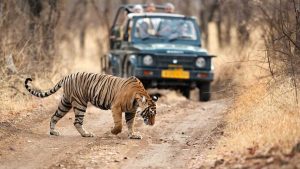
Tigers, elephants, lions and many other wild animals can still be sighted in some of the wonderful wildlife parks present in India. Going to Ranthambore or Bandhavgarh, you can sit on a jeep or a canter and see these wonderful animals.
While you’re there, you’ll also discover how important it is to protect India’s diverse wildlife and the efforts being made to conserve it.
V. Getting to India
India welcomes millions of visitors every year through its main airports. The busiest are Indira Gandhi International in Delhi, Chhatrapati Shivaji Maharaj International in Mumbai, and Kempegowda International in Bengaluru. Popular flights link India to major European, North American, Middle Eastern, and Southeast Asian cities.
Most foreign nationals require a visa to enter India. The visa application process can be completed online through the official Indian government e-Visa portal. Here are the main types of visas available:
- Tourist visa
- Business visa
- Medical visa
- Student visa
- Employment visa
- Conference visa
The e-visa is a convenient option for many travelers. It allows online application and approval for short stays. It’s available to eligible citizens of over 160 countries for tourism, business, and medical visits.
When arriving in India, have your visa and other required documents ready. Be prepared to go through immigration and customs procedures. Declare any items as required and be aware of prohibited and restricted goods.
For the most up-to-date and accurate visa information, always refer to the official Indian government visa website. Requirements can change, so check well before your planned travel dates.
VI. Best Way to Get Around India
India is a big and diverse country, and getting around can be tough. With many transport options, it’s important to choose the one that best suits you. Here’s a comparison of popular ways to travel in India, including their pros and cons, safety tips, and advice.
- Transportation Options in India: A Comparison
| Mode of Transport | Pros | Cons |
| Domestic Flights | Fastest way to cover long distances, convenient for business travelers | Expensive, limited routes, security checks can be time-consuming |
| Trains | Affordable, scenic routes, various classes to choose from | Can be slow, crowded, and delayed |
| Buses | Cheap, frequent services, connects rural areas | Uncomfortable, crowded, and prone to delays |
| Taxis and Ride-sharing Services | Convenient, door-to-door service, affordable | Traffic congestion, safety concerns, surge pricing |
| Auto-rickshaws | Affordable, convenient for short distances, fun experience | Can be crowded, safety concerns, limited routes |
To get around India, choose the best transport based on your needs. Use auto-rickshaws for short city trips – they’re cheap and easy to find but agree on the fare first. Taxis or ride-sharing apps like Uber are better for comfort, especially with luggage. For traveling between cities, trains are affordable and offer various comfort levels; opt for AC coaches for a better experience. If you’re short on time, domestic flights are quickest, though more expensive. Always keep your belongings safe and plan your travel during the day when possible.
VII. Where is the Best Place to Stay in India?
India offers diverse accommodation options to suit all budgets and preferences. Here are some popular choices:
- Luxury Hotels: Enjoy top-notch services at 5-star hotels, perfect for special events or business trips.
- Mid-range Hotels: Comfortable and affordable places with modern features, great for families and travelers wanting good quality.
- Budget Guesthouses and Hostels: Basic stays for backpackers and budget travelers, great for meeting people and getting local advice.
- Homestays: Live with local families and experience Indian culture up close, learning about traditions.
- Heritage Properties: Stay in historic buildings like palaces for a unique taste of India’s history.
When picking a safe and comfy place to stay, use trusted sites like Booking.com, Agoda, or Airbnb to book. Read recent reviews from other travelers, check the location near attractions and transport, and ensure a 24-hour front desk and good security.
Popular Areas to Stay in Major Tourist Destinations:
- Delhi: Stay in Connaught Place, Karol Bagh, or Hauz Khas for easy access to attractions.
- Mumbai: Choose from Colaba, Bandra, or Andheri for a mix of nightlife, shopping, and sightseeing.
- Agra: Stay near the Taj Mahal on Fatehabad Road or a quieter area like Taj Ganj.
- Jaipur: Pick a hotel in the Pink City area near the Johari Bazaar.
- Goa: Relax on the beach in Palolem, Baga, or Calangute, or stay in Panjim for a more urban experience.
VIII. Apps, SIM Cards & Adapters
- Essential Apps for India Travel
- Translation Apps: Google Translate, Microsoft Translator, or iTranslate
- Maps and Navigation: Google Maps, Maps.me, or Citymapper to navigate India’s cities and roads.
- Transportation: Ola, Uber, or Meru to book cabs and taxis.
- Events and Activities: BookMyShow, Events High, or India Today to find and book events, concerts, and activities.
- Food and Restaurant Guides: Zomato, Swiggy, or Foodpanda to discover and order food from local restaurants.
- Getting an International SIM Card
You can buy an Indian SIM card at airports or city centers. To buy an Indian SIM card, you’ll need to:
- Provide a valid passport and visa (if required)
- Fill out a registration form with your details
- Submit a photocopy of your passport and visa (if required)
- Pay for the SIM card and any additional services (e.g., data plans)
As you see, buying a SIM card when you travel can be very tiring and complicated. That’s why I highly recommend tourists get an eSIM. It’s super convenient because you don’t have to change your physical SIM card. You can buy and receive your eSIM online whenever you want, and it’s easy to activate by scanning a QR code to connect with the best local network. Plus, you can avoid costly roaming fees!
I suggest checking out esimindia.net, or gigago.com, brands that offer many eSIM plans for tourists. Their prices range from $6.5 to $156, with 3GB to 20GB data plans or daily plans of 1GB to 2GB. They work with Jio, a major carrier in India, and provide instant delivery via email. You can also reach their customer support anytime through WhatsApp or email.
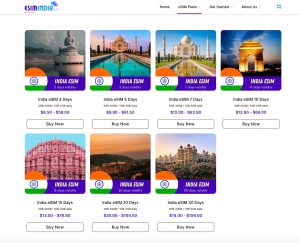
- Adapters in India
India uses Type C, Type D, and Type M plug sockets, which differ from those used in many other countries. To stay safe, use a travel adapter to accommodate these plug types.
- Voltage: India operates on a 230V supply voltage and 50Hz frequency.
- Voltage Converters: If your device is incompatible with India’s voltage, you may need a voltage converter or transformer.
X. Conclusion
I hope you find these tips helpful as you plan your first trip to India. By knowing a few important things before you go, you’ll be better prepared to enjoy all that this incredible country offers. Whether it’s choosing the best time to visit, packing the right essentials, or understanding local customs, these insights will make your journey smoother and more enjoyable. Good luck!


